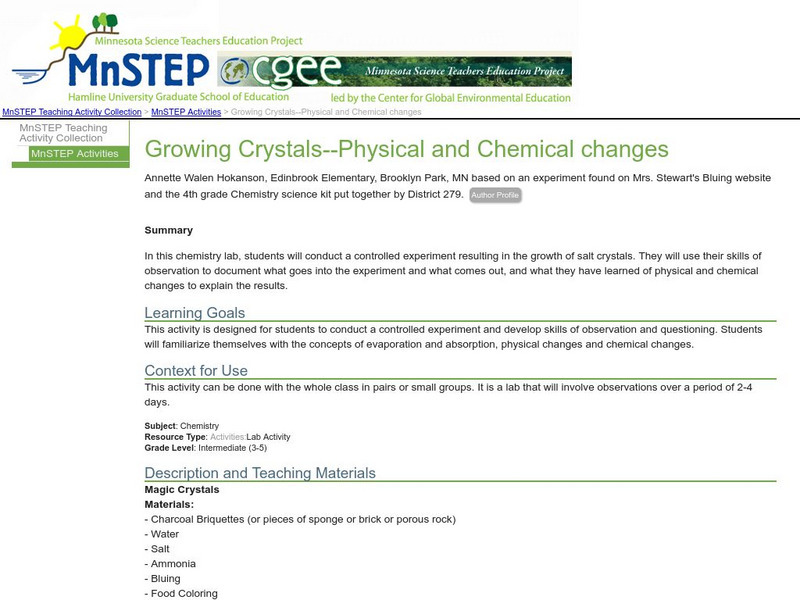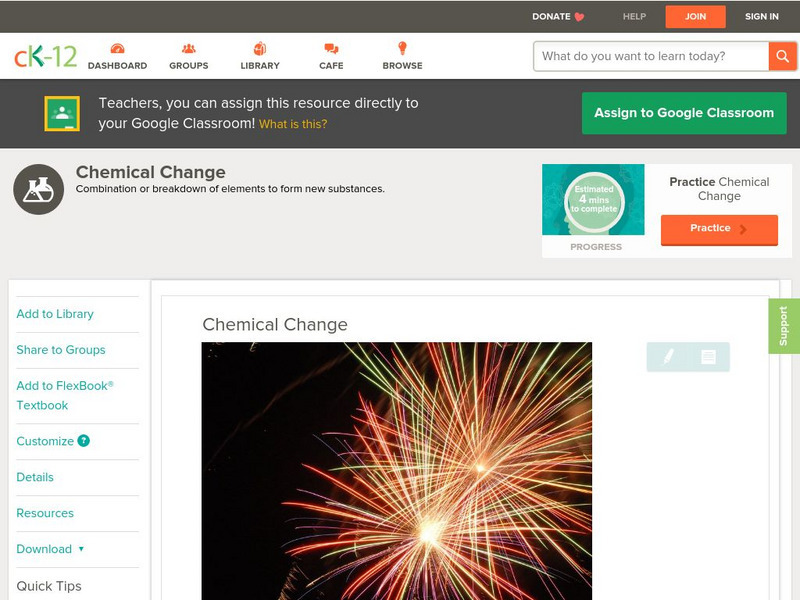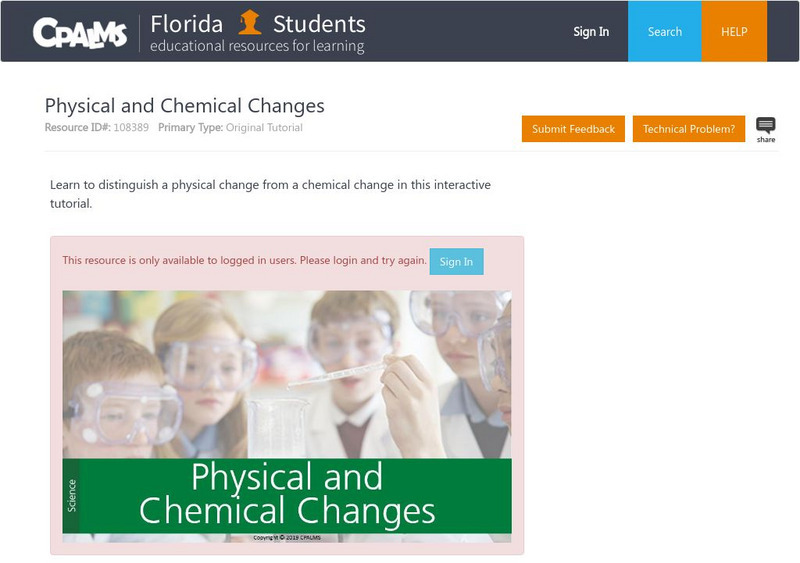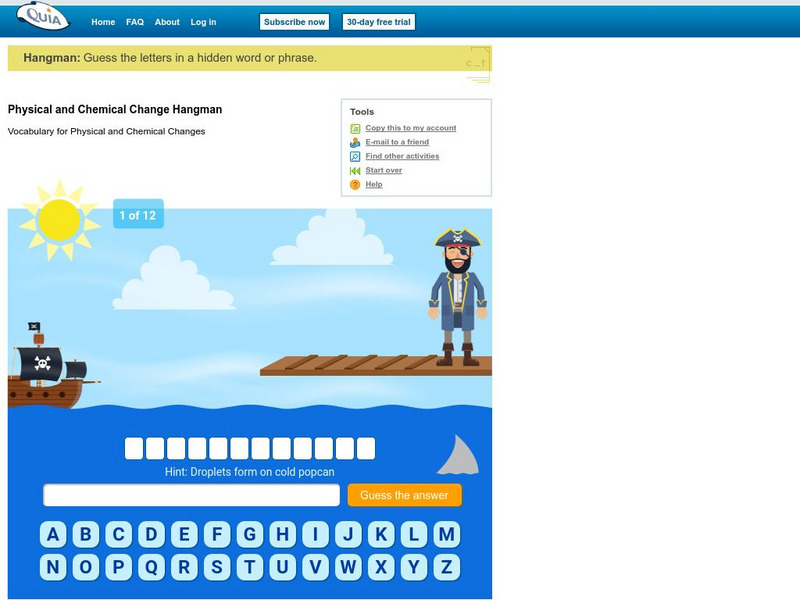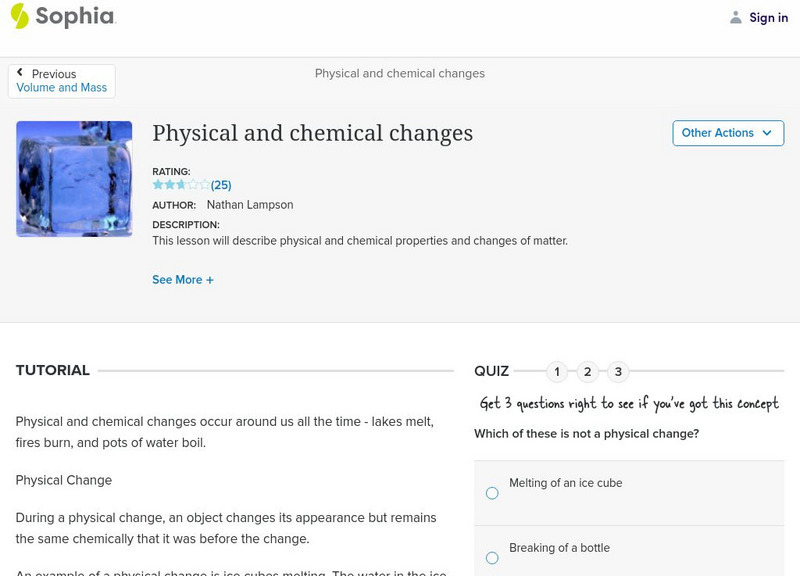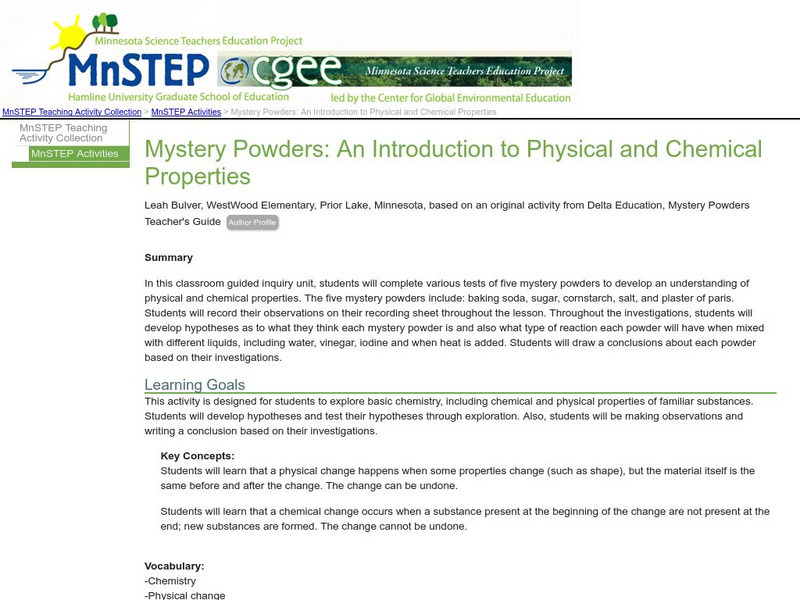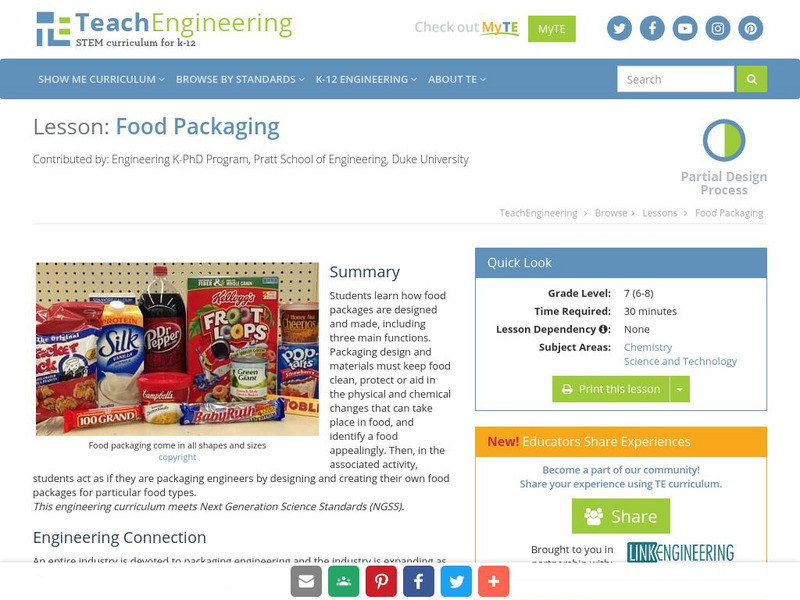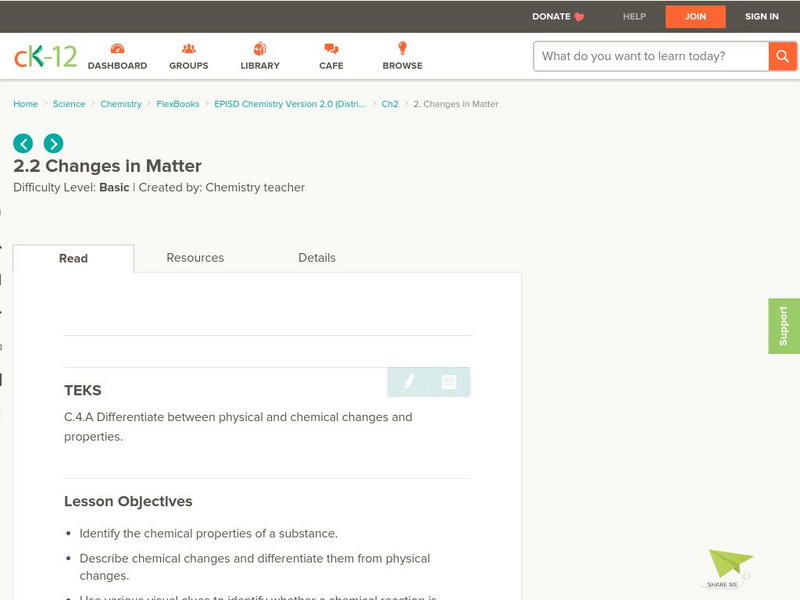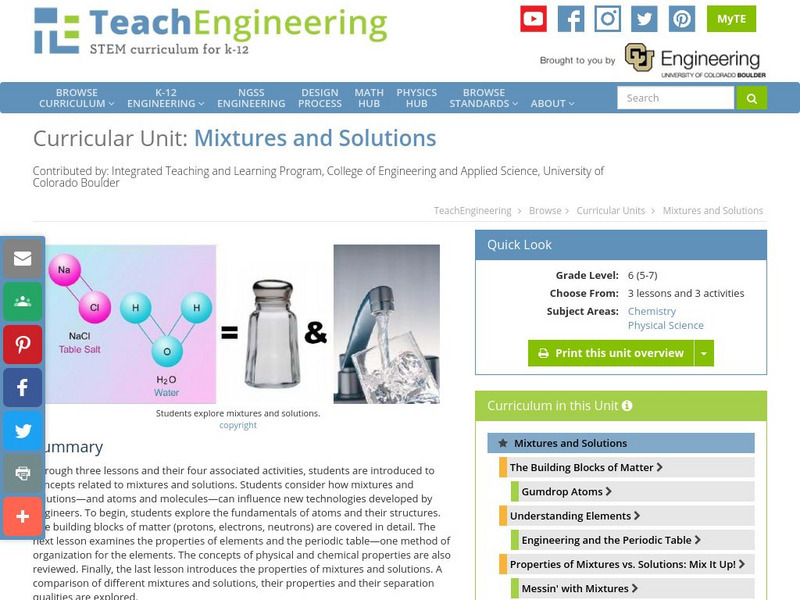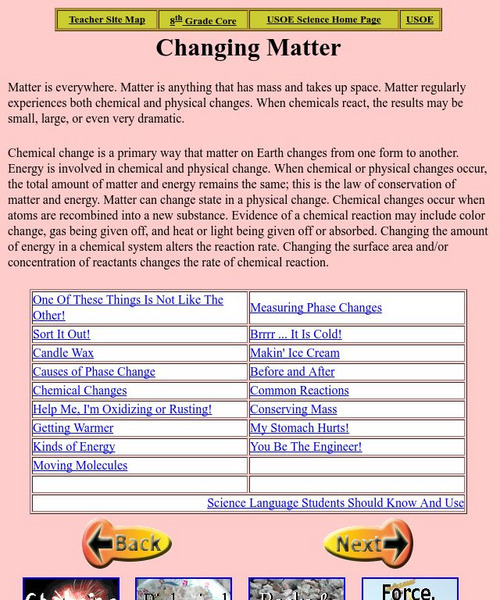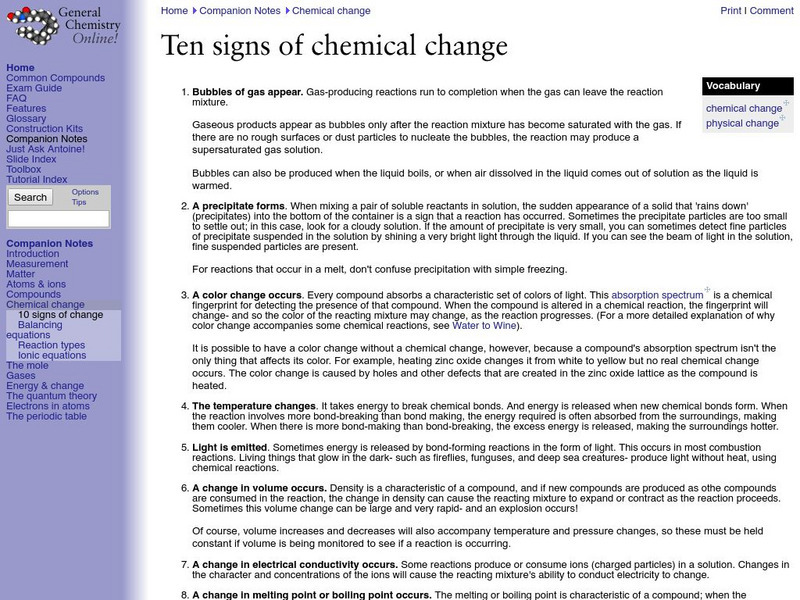Hi, what do you want to do?
CK-12 Foundation
Ck 12: Fifth Grade: Physical Science: Physical and Chemical Changes in Matter
[Free Registration/Login may be required to access all resource tools.] Provides the definitions of physical and chemical changes in matter and gives examples. The law of conservation of mass is also described.
Science Education Resource Center at Carleton College
Serc: Growing Crystals Physical and Chemical Changes
Students conduct a controlled experiment resulting in the growth of salt crystals. They will use their skills of observation to document what goes into the experiment and what comes out, and what they have learned of physical and...
ArtsNow
Arts Now Learning: Using Tableau to Explore Physical & Chemical Changes [Pdf]
In this lesson, 5th graders explore how to use tableaux to dramatize physical and chemical changes, and add dialogue to the tableaux to support their argument of whether the change is physical or chemical.
ClassFlow
Class Flow: Physical and Chemical Changes
[Free Registration/Login Required] Physical and chemical changes are defined and examples are given of each. Practice with determining the difference between mixtures and solutions are also given. Links to external sites for practice...
CK-12 Foundation
Ck 12: Physical Science: Chemical Change
[Free Registration/Login may be required to access all resource tools.] Definition of chemical change and examples, signs of chemical change and how it can be reversed.
CPALMS
Florida State University Cpalms: Florida Students: Physical and Chemical Changes
Explore the differences between chemical and physical changes, including some examples at the atomic level.
Quia
Quia: Physical and Chemical Change Hangman
Quia Corporation provides a hangman game about physical and chemical changes.
Sophia Learning
Sophia: Physical and Chemical Changes
This lesson will describe physical and chemical properties and changes of matter.
Science Education Resource Center at Carleton College
Serc: Mystery Powders: An Introduction to Physical and Chemical Properties
Students will complete various tests of five mystery powders to develop an understanding of physical and chemical properties. They will record their observations and develop hypotheses as to what they think each mystery powder is and...
ClassFlow
Class Flow: Physical and Chemical Changes
[Free Registration/Login Required] This flipchart introduces fifth graders to physical and chemical changes in matter. The Law of Conservation of Matter is also covered.
American Chemical Society
Middle School Chemistry: Chapter 6: Chemical Change
Twelve interactive chemistry lessons about chemical changes complete with handouts and animations.
TeachEngineering
Teach Engineering: Food Packaging
This activity focuses on how food packages are designed and made. Students will learn three of the main functions of a food package. They will learn what is necessary of the design and materials of a package to keep food clean, protect...
Science and Mathematics Initiative for Learning Enhancement (SMILE)
Smile: Physical and Chemical Changes
This lesson plan focuses on the difference between physical and chemical changes of matter.
Alabama Learning Exchange
Alex: Name That Change!
This lesson teaches students to distinguish between physical and chemical changes. Students will view an interactive slideshow presentation and then conduct experiments to discern physical and chemical changes.
Utah Education Network
Uen: Hot and Cold
Students study the energy associated with physical and chemical changes. The activity consists of observing nine phenomena.
Other
Science4 Us: Changes in Matter
Through an instructional video, games, and activities, students explore three types of change matter makes: physical change, in which only the shape of the matter changes; physical phase change in which matter changes to a different form...
SMART Technologies
Smart: Physical and Chemical Properties
Students will learn the difference between physical and chemical properties of matter.
CK-12 Foundation
Ck 12: Changes in Matter
[Free Registration/Login may be required to access all resource tools.] In the following online tutorial students identify the chemical properties of a substance and describe chemical changes and differentiate them from physical changes....
American Chemical Society
Middle School Chemistry: Lesson Plans: Using Chemical Change to Identify Unknown
Students observe reactions of liquids with different known powders in this lesson. Unknown powders are then identified using characteristic chemical changes.Site includes a procedure, teacher instructions, and video instruction.
American Chemical Society
Inquiry in Action: Using Chemical Change to Identify an Unknown
This activity explores how students could use chemical changes to identify unknown substances. Lab activity includes student and teacher worksheets.
E-learning for Kids
E Learning for Kids: Science: Mediterranean Sea: What Are Reversible and Irreversible Changes?
Students will learn about reversible and irreversible changes in materials in this lesson.
TeachEngineering
Teach Engineering: Mixtures and Solutions
This unit covers introductory concepts of mixtures and solutions. Students think about how mixtures and solutions, and atoms and molecules can influence new technologies developed by engineers. The first lesson explores the fundamentals...
Utah State Office of Education
Utah Science: Changing Matter
Matter changes both physically and chemically on a fairly regular basis. Through these activities students will challenge their understanding of the changes that may take place with different types of matter.
Frostburg State University
General Chemistry Online: Ten Signs of Chemical Change
Resource provides the ten signs that tell when a chemical change has occured. Each sign has a detailed explanation.






